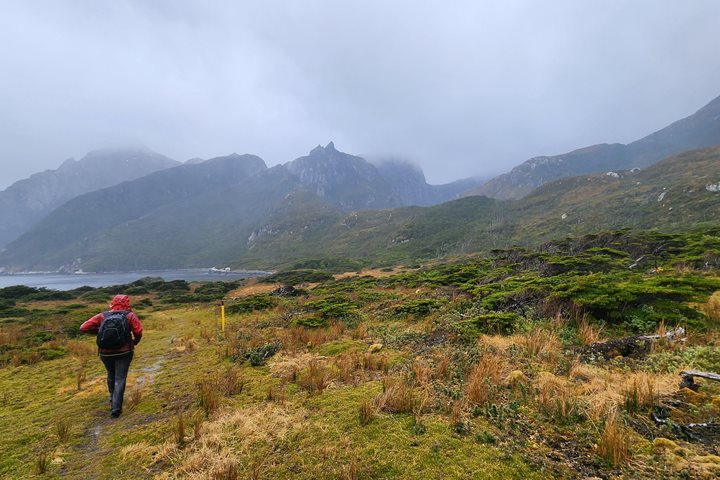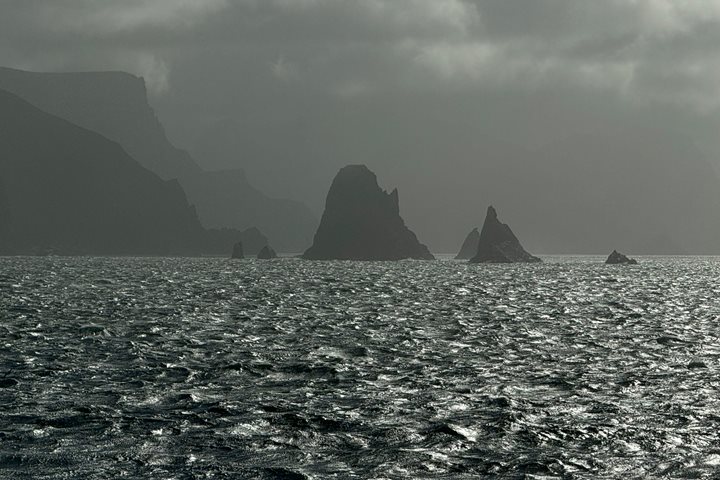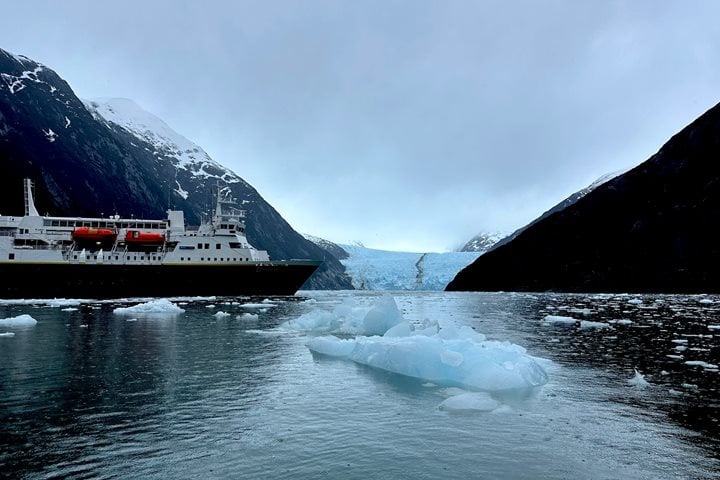Today was a truly fantastic day for our expedition. After arriving in the morning to the Garibaldi Glacier we left National Geographic Orion to explore the ice face and the fjord in the Zodiacs. It did not take us long to realize that this is a remarkable place not only due to the advancing glacier that calves into the fjord, but also to the surrounding forest of nothofagus or southern beech trees that grow all the way to the edge of the ice and snow. Along the steep walls of the fjord, a large number of waterfalls cascade into the water, contributing to the presence of glacial flour or finely ground stone that gives the water almost a milky appearance. We were not only taken aback by the imposing glacier wall and its stunning blue colour, but driving through the brash ice of the fjord allowed us to experience this place with all our senses: the sound of the ice being pushed by the Zodiacs, the water falling from the heights of the stone walls into the fjord, and the thundery sound of the calving glacier really added a new dimension to the whole experience.
In the afternoon, we continued sailing along the intricate ways of the Patagonian channels, enjoying more stunning views of the southern end of the Andes. The captain treated us with a surprise visit to another striking hanging glacier and waterfall, that we could all photograph and appreciate from the stern of the ship. Our afternoon at sea was accompanied by black-browed albatrosses and giant petrels. We learned on board about the natural history of condors and their important cultural significance for Andean cultures, and about the people who inhabited these remote territories for about 10,000 years that were admirably adapted to this challenging environment until their tragic and rapid disappearance in relatively recent times.







